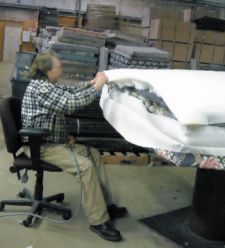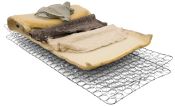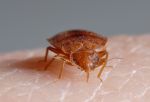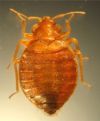Mattress Recycling

New: Evaluation of Connecticut's Mattress Stewardship Program. Section 22a-905c of the Connecticut General Statutes requires the Department of Energy and Environmental Protection to conduct an evaluation of the mattress stewardship program. This evaluation covers the period from the beginning of the program in 2015 through 2022. The mattress recycling program has recycled over 1 million mattresses and saved Connecticut municipalities millions of dollars. The report establishes goals for recovery and identifies recommendations to improve the program. For more information contact Tom Metzner by email at tom.metzner@ct.gov.
Mattresses and box springs become problematic once they reach the end of their useful life. Since they are bulky and hard to move, disposal is difficult and increasingly expensive for municipalities. As a result, they often become an illegal dumping problem found on curbs, vacant lots, and roadsides. There is no easy way to dispose of mattresses because they are not only difficult to landfill, but also pose challenges for some incinerators due to their inability to be easily compressed and crushed, and become tangled in equipment.
However, mattress recycling has been increasing as an alternative to landfilling or incineration. Many components found in a mattress can be recycled, such as foam, cotton, wood, and the steel springs. Recyclers in the business of dismantling mattresses and box springs can recover 80-95% of the materials for reuse or recycling.
Mattress Stewardship Law
In 2013, Connecticut became the first state to pass comprehensive mattress stewardship legislation. Public Act 13-42 requires mattress manufacturers to establish a program to manage unwanted mattresses generated in Connecticut. The law assesses a fee at the point of sale to finance the program. When a consumer purchases a new mattress, there will be an additional fee charged. The retailer will transfer this money to the mattress manufacturers who will use it to pay for transportation and recycling of unwanted mattresses. This fee was initiated on May 1, 2015. The government does not administer this program or control the funds collected. The mattress manufacturers, now known as the Mattress Recycling Council (MRC), submitted the Connecticut Mattress Stewardship Plan to the DEEP Commissioner on December 31, 2014. In order to provide the mattress industry with the information necessary to draft the best plan possible, DEEP convened a stakeholder working group in which municipalities, recyclers, mattress manufacturers, environmental groups, entrepreneurs and other interested parties participated.
Connecticut Mattress Stewardship Program
The Mattress Recycling Council (MRC) is a non-profit organization created to develop and implement Connecticut’s statewide mattress stewardship program.
To participate, contact the Mattress Recycling Council directly at (855) 229-1691 or info@mattressrecyclingcouncil.org.
The MRC has developed a fact sheet for municipalities and created a locator tool, www.byebyemattress.com, where residents can find a drop off location for their used mattresses. Please note that since this program is voluntary on behalf of municipalities, some towns may not be participating. If you do not get results when using the locator tool, please contact your local recycling coordinator to find out where to bring your used mattress for recycling or disposal.
Additional MRC Resources
In accordance with Public Act 16 – 122, the MRC is required to submit a certified audited financial statement and the names of any contractors and organizations with which such product stewardship organization has a contract with a value of two thousand dollars or more.
MRC Audited Financial Statements and Vendor Contracts:
- MRC Vendor Contracts 2020
- MRC Audited Financial Statement 2019
- MRC Vendor Contracts 2019
- MRC Audited Financial Statement 2018
- MRC Vendor Contracts 2018
- MRC Audited Financial Statement 2017
- MRC Audited Financial Statement from Inception July 2017 through 2017
- MRC Bridging Report 2017
- MRC Vendor Contracts 2017
Refurbish vs. Reuse vs. Recycle
Reuse – Mattresses and upholstered furniture in Connecticut can be used again as mattresses and furniture. Individuals and businesses can legally donate these materials (though they should be in good, clean condition). Thrift shops or other reuse businesses can only resell mattresses and upholstered furniture with proper licenses from the CT Department of Consumer Protection.
|
Please Note
It is illegal for any storefront/retailer to sell, rent, or renovate any used bedding or upholstered furniture without the proper license and permit, and proper sanitization/sterilization methods. These statutes and regulations are enforced by the CT Department of Consumer Protection’s Bedding and Upholstered Furniture Program.
|
| Prolong the life of your mattress by following the manufacturer's instructions, which generally involves turning it four times a year. |
Where Do the Materials Go and What Are They Used For?
|
What’s in a Mattress?
A mattress is made up of metal (mostly steel), wood, cotton batting, paper, fiberfill, urethane foam, and other miscellaneous textiles.
 It typically has 9 pounds of cotton and 25 pounds of steel. It's composition is roughly:
30% metal
38% cotton 10% foam 4 % wool shoddy Overall these numbers vary, and continue to change as manufacturers adjust how they make beds and the materials they use to make them.
|
Bed Bugs
The Connecticut Coalition Against Bed Bugs (CCABB) suggests if bed bugs are found on a mattress and/or box spring they either be put into encasements and tagged as infested or marked (spray painted) as infested and slashed/defaced/cut up/damaged to prevent reuse and further infestation. Managers of transfer stations, landfills, mattress recycling facilities, and incinerators are encouraged to review the following documents to ensure that staff are taking precautions not to bring bed bugs home with them.
- Give Bed Bugs the Boot! A resource for transfer station attendants. (CCABB)
- DELE UN ZAPATAZO A LOS CHINCHES! (Spanish Version)
 |
DO NOT donate or give away mattress and/or box springs if they have bed bugs! Bed bugs hide in cracks and crevices, such as seams, tufts, labels, and corner protectors. They leave behind black spots (fecal matter).
|
 |
Mattress Recycling Facilities in the Northeast
459 Iranistan Avenue, Bridgeport, CT 06604
203-334-7336 (203-33-GREEN)
Permitting a Mattress Recycling Facility
Additional Mattress Recycling Resources
- Best Practices for Bed Bug Management of Mattresses, Bedding, and Upholstered Furniture: Guidance Document for the Reuse/Resale and Recycling Industries in Connecticut, (CT Council Against Bed Bugs), 2011
- The History of Bed Bug Management – With Lessons from the Past, by Michael F. Potter, American Entomologist, Spring 2011
- Annotated Bibliography on Mattress Reuse, Remanufacturing and Recycling (CT DEEP), June 2011
- Putting Bulky Waste to Rest: Mattress Recycling Efforts in Connecticut (CT DEEP), Presented at the International Bedding and Law Officials Annual Meeting, Austin, Texas. March 2011.
- St. Vincent de Paul – largest mattress recycler in US, leader in expanding economic development opportunities from waste stream diversion.
- DR3 (Divert, Reduce, Reuse, Recycle) - mattress recycling business in San Leandro, California.
- Used Mattress Management in CT - Final Report (CT DEEP June 2011)
- Mattress Survey Questions and Results (CT DEEP June 2011)

